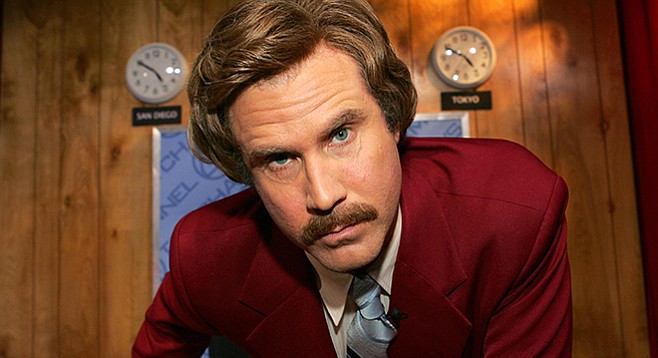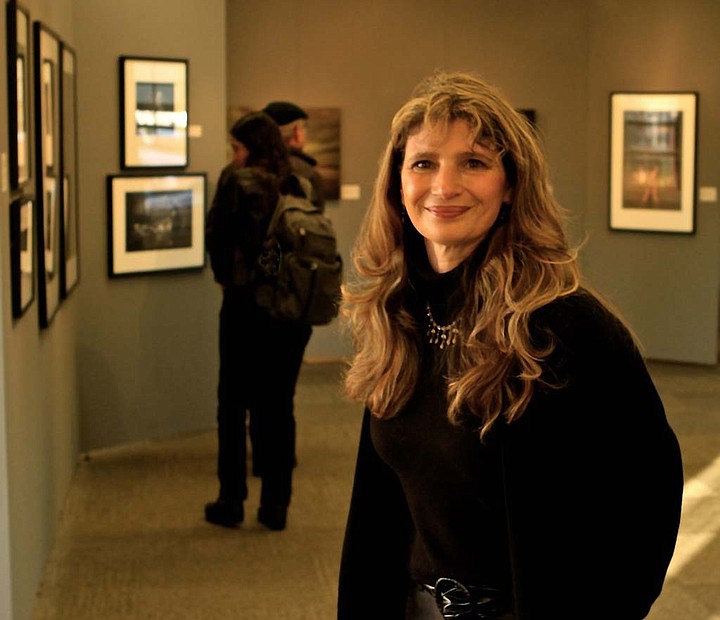 Facebook
Facebook
 X
X
 Instagram
Instagram
 TikTok
TikTok
 Youtube
Youtube

Though it served as a major filming hub during the silent era, of late our town can’t buy a decent production. Anchorman was 2004. Before that, Traffic and Titanic. The statute of limitations has long run out. With Hollywood practically in our backyard (or is it the other way around?) we need an organization to, among other things, help boost year-round employment for local crews as well as businesses. Why dump a boatload of taxpayer dough into yet another sports complex when there’s money to be made renting out our sidewalks and rooftops as movie locations?
The San Diego Film Commission was shuttered in 2012. But of late, there’s been renewed interest in reinstating the SDFC as a means of bringing both revenue and a little showbiz glitz to America’s Finest City. That’s where the San Diego Filmmaker’s Francine Filsinger comes in, and here is what she has to say.

Scott Marks: Let’s start with a little background, where you come from, how you got the job...
Francine Filsinger: I don’t have a job. The San Diego Filmmakers is a 501c3 nonprofit. All of us are volunteers.
SM: Aren’t you being groomed as the new head of the San Diego Film Commission?
FF: Hell no! (Laughing.) Nobody knows who that is. Mayor Faulconer proposed a new budget to establish the very beginnings of a film office and that included a project manager. The City Council voted to expand the budget by another $125,000 and they also added another staff member. What that group is going to do is lay the groundwork and facilitate a request for information about major stakeholders in the industry. From that will come proposal requests, and that is what is going to become the structure of the Film Office. There’s a facilitation right now with the program manager to do the permitting and work to solve some of the logistical issues.
SM: What logistical issues?
FF: Permits are a huge thing. That is part of the city’s paid substructure. This will all have to be determined which is why there will be all these proposals coming in about how it should actually be constructed. I would love to see an independent non-profit run the office. It’s responsive to a board; there’s not a big power base; it’s more spread out.
SM: Do you have a background in film?
FF: No. I’m an artist. I started out as a classical pianist. There is a central spirit in art that just comes out in different forms. I’m also an actor as well as an international award-winning fine arts photographer. I look at film as a serious of succinctly and beautifully told still photos.
SM: Here’s what you tell the studios: San Diego’s a scant two hour-drive down the 5. Crews can work five days filming in beautiful, weatherless San Diego and still spend weekends at home with their families. It beat’s the hell out of a three-month shoot in Louisiana. What will it take to get there?
FF: The City has already created funding, and the County, spearheaded by Supervisor Dave Roberts, is also looking towards additional funding. They hope to provide seed money for three years. There are other investors interested, whether they be corporate or nonprofit, to help stimulate growth. But the big boost is going to come from production. As revenue brings in production, that will help to grow and support the endeavor. For example, at its height in 2005, the city invested, I believe, $735,000. The Commission at the time estimated it received revenues of over $100 million.
SM: That was around the time of Anchorman, the last big studio picture to film in San Diego. Even the climactic scenes in Ted 2 were filmed at Comic Con New York and not the city that spawned it.
FF: There is another side to this. Besides the infrastructure is the advocacy and marketing side, an ability to go out and visit some of the different expos to establish relationships with producers and directors. It takes credibility. For instance, I’m friends with Jordan Roberts.
SM: Frankie Go Boom. I love that movie!
FF: I asked if he would consider filming in San Diego. He said, “Sure. I have no reason not to. I would want to see how my cast and crew felt about it, as well as checking with others who had filmed there. Other than that, I have no prejudice against the city.” That encouraged me. What has to happen is we need to establish a level of professional credibility. That comes with ease of production by making San Diego a one-stop shop. You gather all of the local entities — the police, the fire department, traffic authorities — the people responsible for facilitating a seamless shoot.
SM: What about offering tax incentives?
FF: Assembly Bill No. 1839 is intending to bring tax breaks for larger studio productions. We’re behind the eight ball in terms of competing with areas like the Carolinas, Georgia, and Louisiana. But it’s a start.


Though it served as a major filming hub during the silent era, of late our town can’t buy a decent production. Anchorman was 2004. Before that, Traffic and Titanic. The statute of limitations has long run out. With Hollywood practically in our backyard (or is it the other way around?) we need an organization to, among other things, help boost year-round employment for local crews as well as businesses. Why dump a boatload of taxpayer dough into yet another sports complex when there’s money to be made renting out our sidewalks and rooftops as movie locations?
The San Diego Film Commission was shuttered in 2012. But of late, there’s been renewed interest in reinstating the SDFC as a means of bringing both revenue and a little showbiz glitz to America’s Finest City. That’s where the San Diego Filmmaker’s Francine Filsinger comes in, and here is what she has to say.

Scott Marks: Let’s start with a little background, where you come from, how you got the job...
Francine Filsinger: I don’t have a job. The San Diego Filmmakers is a 501c3 nonprofit. All of us are volunteers.
SM: Aren’t you being groomed as the new head of the San Diego Film Commission?
FF: Hell no! (Laughing.) Nobody knows who that is. Mayor Faulconer proposed a new budget to establish the very beginnings of a film office and that included a project manager. The City Council voted to expand the budget by another $125,000 and they also added another staff member. What that group is going to do is lay the groundwork and facilitate a request for information about major stakeholders in the industry. From that will come proposal requests, and that is what is going to become the structure of the Film Office. There’s a facilitation right now with the program manager to do the permitting and work to solve some of the logistical issues.
SM: What logistical issues?
FF: Permits are a huge thing. That is part of the city’s paid substructure. This will all have to be determined which is why there will be all these proposals coming in about how it should actually be constructed. I would love to see an independent non-profit run the office. It’s responsive to a board; there’s not a big power base; it’s more spread out.
SM: Do you have a background in film?
FF: No. I’m an artist. I started out as a classical pianist. There is a central spirit in art that just comes out in different forms. I’m also an actor as well as an international award-winning fine arts photographer. I look at film as a serious of succinctly and beautifully told still photos.
SM: Here’s what you tell the studios: San Diego’s a scant two hour-drive down the 5. Crews can work five days filming in beautiful, weatherless San Diego and still spend weekends at home with their families. It beat’s the hell out of a three-month shoot in Louisiana. What will it take to get there?
FF: The City has already created funding, and the County, spearheaded by Supervisor Dave Roberts, is also looking towards additional funding. They hope to provide seed money for three years. There are other investors interested, whether they be corporate or nonprofit, to help stimulate growth. But the big boost is going to come from production. As revenue brings in production, that will help to grow and support the endeavor. For example, at its height in 2005, the city invested, I believe, $735,000. The Commission at the time estimated it received revenues of over $100 million.
SM: That was around the time of Anchorman, the last big studio picture to film in San Diego. Even the climactic scenes in Ted 2 were filmed at Comic Con New York and not the city that spawned it.
FF: There is another side to this. Besides the infrastructure is the advocacy and marketing side, an ability to go out and visit some of the different expos to establish relationships with producers and directors. It takes credibility. For instance, I’m friends with Jordan Roberts.
SM: Frankie Go Boom. I love that movie!
FF: I asked if he would consider filming in San Diego. He said, “Sure. I have no reason not to. I would want to see how my cast and crew felt about it, as well as checking with others who had filmed there. Other than that, I have no prejudice against the city.” That encouraged me. What has to happen is we need to establish a level of professional credibility. That comes with ease of production by making San Diego a one-stop shop. You gather all of the local entities — the police, the fire department, traffic authorities — the people responsible for facilitating a seamless shoot.
SM: What about offering tax incentives?
FF: Assembly Bill No. 1839 is intending to bring tax breaks for larger studio productions. We’re behind the eight ball in terms of competing with areas like the Carolinas, Georgia, and Louisiana. But it’s a start.
Comments